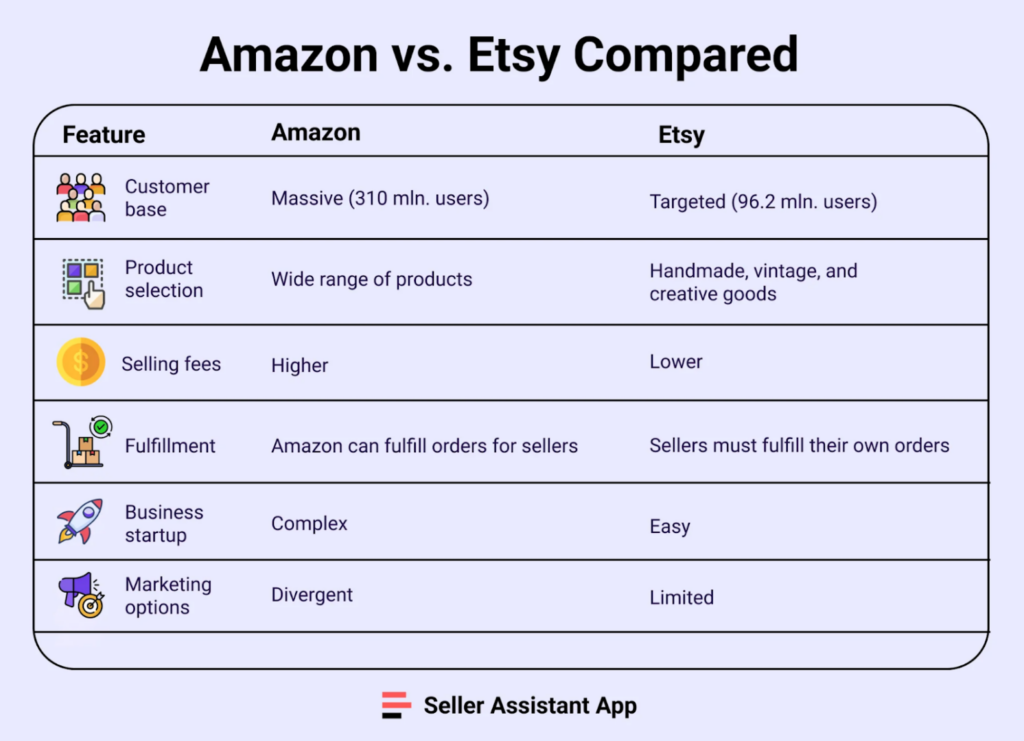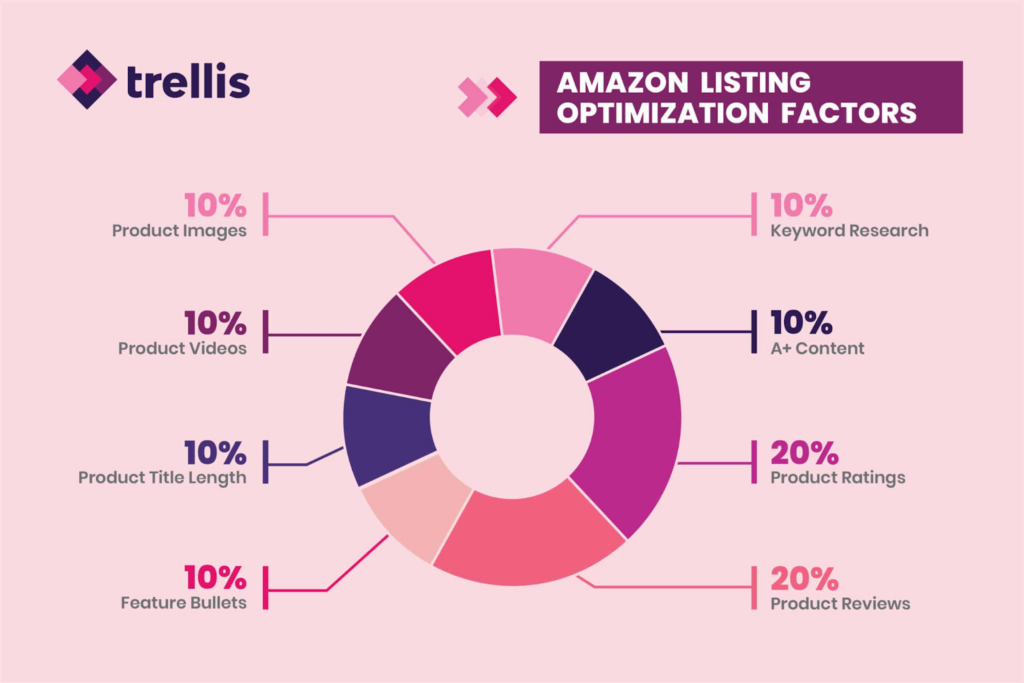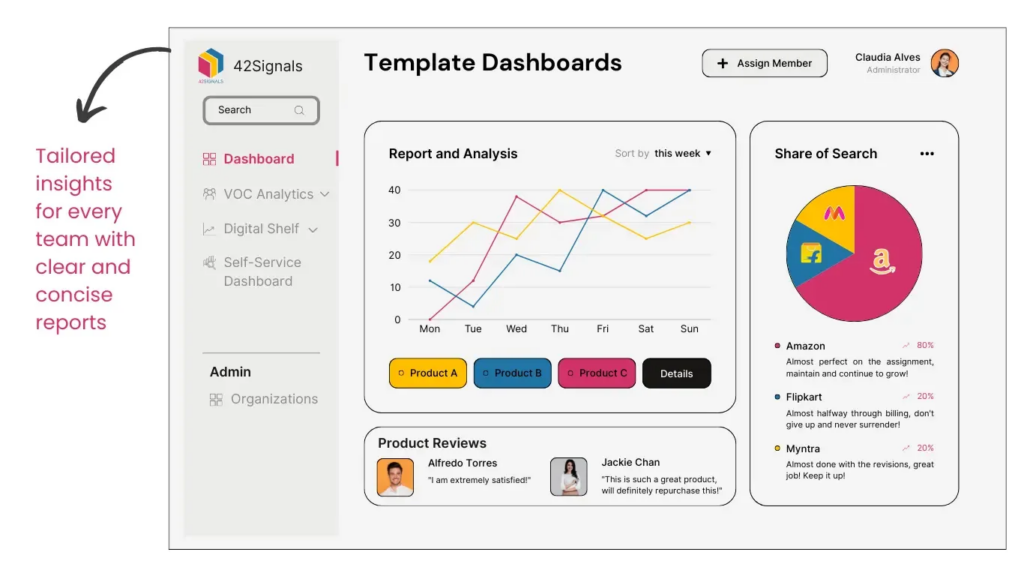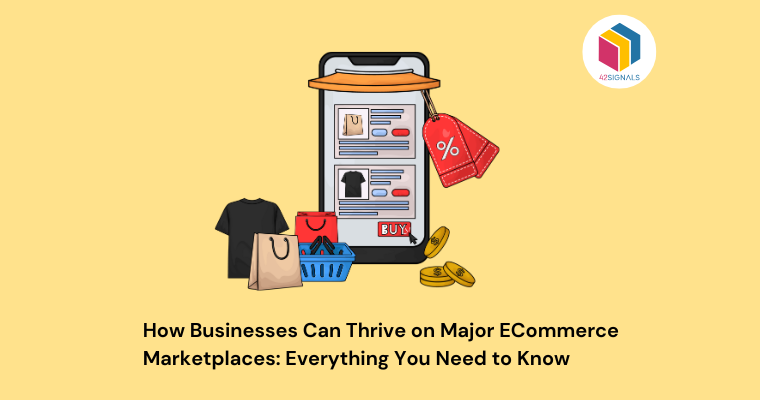From small startups to established enterprises, selling on major e-commerce platforms offers unparalleled opportunities to reach a global audience. However, to truly thrive in this competitive landscape, businesses must understand the intricacies of these platforms, utilize e-commerce analytics effectively, and choose the best eCommerce marketplaces for their products.
We’ll explore everything you need to know to ensure your business not only survives but flourishes on major eCommerce platforms.
What are ECommerce Marketplaces?
ECommerce marketplaces are platforms that connect buyers and sellers, offering a virtual space where products and services can be traded. Unlike individual e-commerce websites, these e-commerce platforms aggregate multiple sellers, providing customers with a wide variety of options in one place.
Some of the most popular eCommerce websites include Amazon, eBay, Alibaba, Etsy, and Walmart. Each of these platforms has its unique features, audience demographics, and selling processes.

Image Source: Mayple
The allure of online shopping lies in its massive user base and the ease of access it provides to sellers.
For businesses, especially those without the resources to build and maintain their own e-commerce sites, these platforms offer an efficient way to enter the online selling arena. However, with opportunity comes competition.
To stand out and succeed, businesses must adopt strategic approaches tailored to the specific platform they are selling in.
Which is the Best Online Marketplaces for Your Business?
Not all online platforms are created equal. The right platform for your business depends on several factors, including your target audience, product type, and business goals.

Image Source: Seller Assistant
Here’s a brief overview of some of the best eCommerce platforms:
- Amazon: With over 300 million active users, Amazon is the world’s largest eCommerce marketplace. It’s ideal for businesses looking to reach a broad audience across various product categories. Amazon’s FBA (Fulfillment by Amazon) service also simplifies logistics, handling storage, packing, and shipping for sellers.
- eBay: Known for its auction-style listings, eBay is a versatile platform suitable for both new and used goods. It’s particularly popular for electronics, collectibles, and vintage items. eBay’s global reach makes it a good option for businesses wanting to tap into international markets.
- Etsy: Etsy specializes in handmade, vintage, and unique goods. It’s the go-to eCommerce marketplace for artisans and small businesses focusing on creative and niche products. If your business sells custom or one-of-a-kind items, Etsy’s community-driven platform might be the best fit.
- Alibaba: Alibaba is the largest e-commerce platform in China and caters primarily to B2B transactions. It’s an excellent choice for businesses looking to source products from manufacturers or sell in bulk to other businesses.
- Walmart: As the largest retailer in the United States, Walmart’s online website offers significant visibility. It’s best suited for established businesses with a proven track record, as Walmart has stringent seller requirements.
When deciding on a platform, it’s essential to consider the platform’s fee structure, user base, and seller support services. Researching a comprehensive list of online places can help you identify which platforms align best with your business model.
How to Optimize Your Product Listings on eCommerce Marketplaces?
Success in eCommerce starts with optimizing your product listings. This involves crafting clear, compelling descriptions, using high-quality images, and setting competitive prices. Your product title should be descriptive yet concise, including relevant keywords that potential buyers might use in their search queries.

Image Source: Go Trellis
Here are some tips for optimizing product listings:
- Use High-Quality Images: Visuals play a crucial role in online shopping. Invest in professional photography or, at the very least, ensure your images are clear, well-lit, and show the product from multiple angles.
- Write Detailed Descriptions: Your product description should provide all the necessary information a buyer needs to make a decision. Highlight the product’s key features, benefits, and any unique selling points. Avoid using generic copy; instead, focus on what makes your product stand out.
- Incorporate Keywords: Just like SEO for websites, using the right keywords in your product listings can improve visibility in the eCommerce marketplace. Research popular search terms related to your product and include them naturally in your title and description.
- Set Competitive Pricing: Price is often a deciding factor for online shoppers. Research your competitors’ prices and set your own to be competitive. Consider offering promotions or discounts to attract more buyers.
Leveraging E-commerce Analytics
E-commerce analytics are essential for understanding how your business is performing on eCommerce marketplaces. These tools provide insights into customer behavior, sales trends, and the effectiveness of your marketing efforts. By analyzing this data, you can make informed decisions to optimize your strategy and improve your bottom line.

Most major online platforms offer built-in analytics tools. For example, Amazon provides the Seller Central dashboard, which gives sellers detailed reports on sales performance, traffic, and customer feedback. Similarly, eBay’s Seller Hub offers insights into listing performance, buyer engagement, and inventory levels.
Here’s how to use e-commerce analytics to your advantage:
- Monitor Sales Performance: Keep track of your sales metrics, such as total sales, average order value, and conversion rates. This data helps you identify which products are performing well and which ones may need improvement.
- Analyze Customer Behavior: Understanding how customers interact with your listings can provide valuable insights. For example, high traffic but low conversion rates may indicate an issue with your product description or pricing.
- Track Inventory Levels: Overstocking or understocking can both be detrimental to your business. Use analytics to monitor inventory levels and ensure you’re meeting customer demand without overcommitting resources.
- Measure Marketing Effectiveness: If you’re investing in paid advertising or promotions on the platform, use analytics to assess the ROI. Determine which campaigns are driving sales and adjust your strategy accordingly.
Building a Strong Brand Presence
While eCommerce platforms offer a built-in audience, building a strong brand presence is crucial for long-term success. A recognizable brand not only attracts repeat customers but also helps you stand out in a crowded category.

Image Source: Fit Small Business
Here are some strategies to build your brand on eCommerce marketplaces:
- Consistent Branding: Ensure your product listings, images, and communication maintain a consistent brand identity. Use your brand logo, colors, and tone of voice across all touchpoints.
- Excellent Customer Service: Customer reviews play a significant role in influencing purchase decisions. Provide excellent customer service to encourage positive reviews and build trust with buyers. Respond promptly to inquiries and resolve any issues quickly.
- Engage with Customers: Use the tools available on the platform to engage with your customers. For example, Amazon allows sellers to create brand stores and run sponsored brand campaigns to increase visibility.
- Expand Your Product Range: Once you’ve established a presence in an eCommerce platform, consider expanding your product range. Offering complementary products can increase your average order value and provide more options for your customers.
Adapting to ECommerce Marketplace Changes
Online platforms are constantly evolving, with updates to algorithms, policies, and seller requirements. Staying informed about these changes is crucial for maintaining your competitive edge.
For example, eCommerce websites like Amazon frequently update their search algorithms, which can impact your product visibility. Sellers need to stay on top of these changes and adjust their strategies accordingly. Similarly, policy changes related to fees, returns, or fulfillment can affect your profitability. Regularly review the seller resources and participate in seller forums to stay updated.
Conclusion
Success in eCommerce marketplaces doesn’t happen overnight, but with persistence, data-driven decisions, and a focus on customer satisfaction, your business can achieve sustainable growth and profitability.
By carefully selecting the best online platforms for your products, optimizing your listings, and staying agile in the face of changes, your business can harness the full potential of these platforms.
To take your eCommerce success to the next level, Sign up and leverage the power of 42Signals for deep insights and data-driven strategies. Start optimizing your marketplace performance today!




